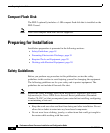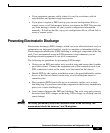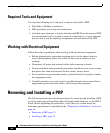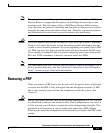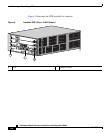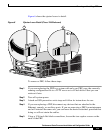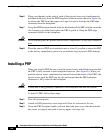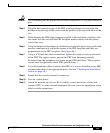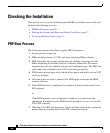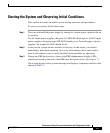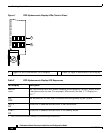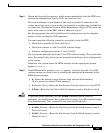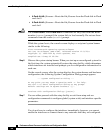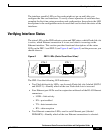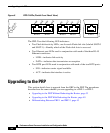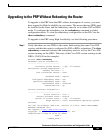
Checking the Installation
26
Performance Route Processor Installation and Configuration Guide
OL-11656-01
Checking the Installation
This section assists you in confirming that the PRP is installed successfully and
includes the following sections:
• PRP Boot Process, page 26
• Starting the System and Observing Initial Conditions, page 27
• Verifying Interface Status, page 31
PRP Boot Process
The following sequence describes a typical PRP boot process:
1. System power is turned on.
2. MBus module receives +5 VDC and starts executing MBus software.
3. PRP determines the system configuration by sending a message over the
MBus requesting all installed devices to identify themselves. The return
response provides slot number, and card and component type. The PRP, line
cards, and clock scheduler cards (CSCs) are then powered up.
4. PRP power-on-reset logic delay, which allows power and both local and CSC
clocks to stabilize.
5. After the power-on reset is released, the PRP begins to execute the ROM
monitor software.
6. If the ROM monitor is configured to autoboot, it loads and boots the Cisco
IOS software.
or
If the ROM monitor is not configured to autoboot, you must enter the
appropriate b command at the ROM monitor prompt (
Rommon>) to boot the
Cisco IOS software.
7. When the Cisco IOS software boots, it polls all other cards in the system and
powers them up, loading their Cisco IOS software as needed.



